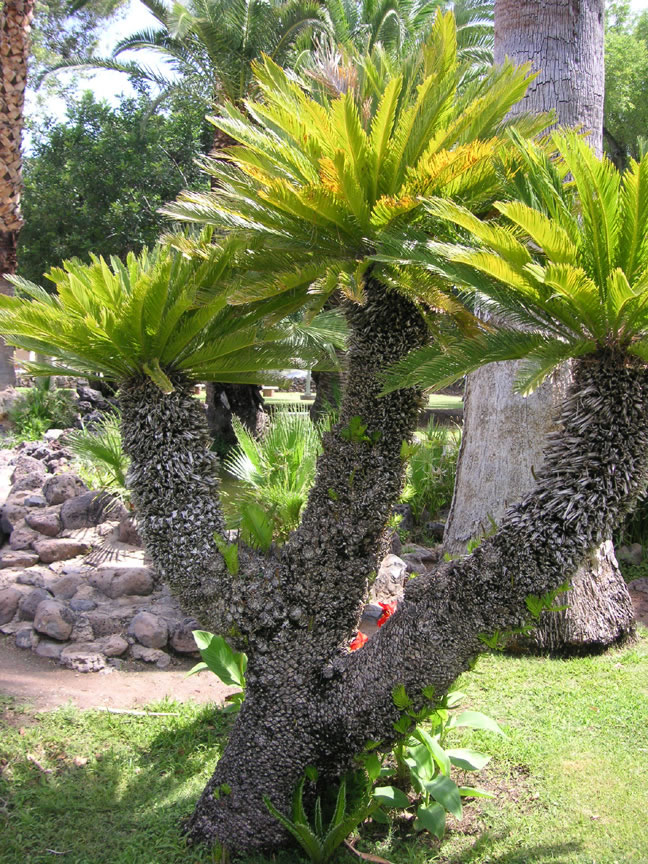 Botanical Characteristics:
Botanical Characteristics:
It is not a true palm but a cycad. Cyads are palm-like cone-bearing evergreen plants and have large pinnate leaves. It more closely related to conifers and ginkgo trees – all cone-bearing plants which trace their origins back to ancient flora 200 million years ago. For this reason they are often called “living fossils”. They are dioecious, with male cycads bearing male, pollen producing cones and females producing seed-bearing cones. It can tolerate cold to 15-20°F.
Ethnobotany:
Plants contain cycasin and other toxins, and can be fatal when eaten. Horses, cats and dogs find these cycads appealing, and the death rate for pets who eat them is a startling 50-75%! Although portions of the plant (seeds, stem) are edible with proper preparation, this is only true after poisons have been removed. Traditionally, seeds are dried and ground into a powder, then mixed with brown rice and fermented into 'date miso' or 'sotetsu miso'. The heart or pith of the trunk is sliced and eaten baked or powdered. A starch can be extracted from this pith and is used for making dumplings.

